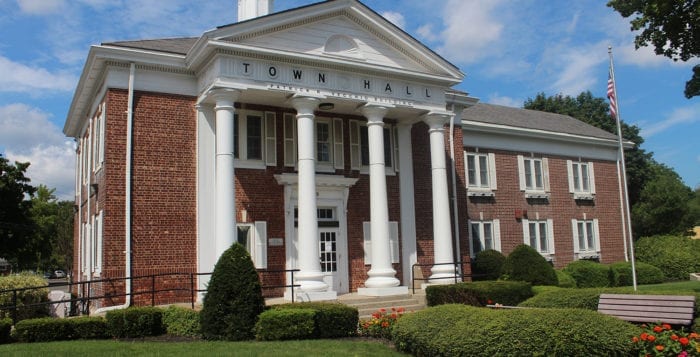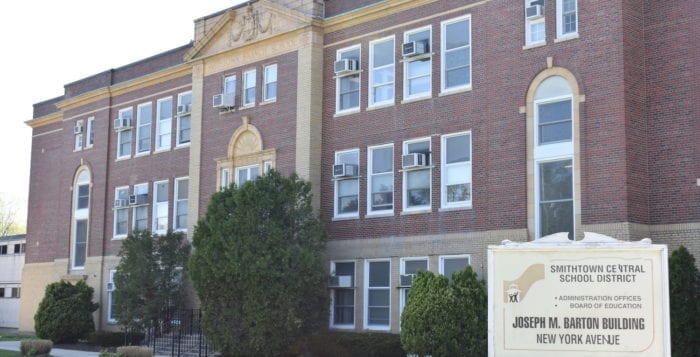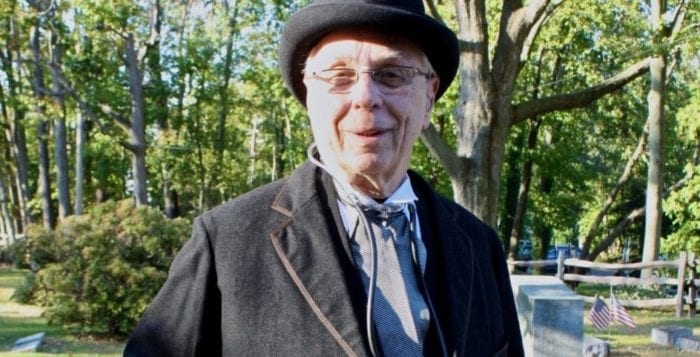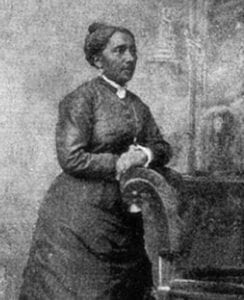By Beverly C. Tyler
Part one of two.
I have always been interested in discovering the history of our ancestors, the stories of the people in our families who came before us. I wanted to learn about where they came from and why they left the places they lived and came to America. The more I learned, the more curious I became.
I also wanted to find out more about the people, places and events that surrounded their lives. In the cartoon “Peanuts,” Sally, Charlie Brown’s sister, once said, “I don’t know much about the past, I wasn’t there.”
“I enjoy learning about the past by searching through the records left by the people who were there.”
— Beverly C. Tyler
I enjoy learning about the past by searching through the records left by the people who were there. I enjoy putting together the pieces of our families’ history and telling their stories. I hope you will enjoy their stories, too, as shared with my grandchildren.
Two of Setauket’s early settlers, the Rev. Nathaniel Brewster, your ninth great-grandfather on your grandmother’s side, and William Jayne, your eighth great-grandfather on your grandfather’s side — my sixth great-grandfather — were both born in the port city of Bristol, in South West England. Their family lines have crisscrossed through British and Setauket history for more than 300 years. Their stories show how the actions of kings and rulers in England helped to shape the early history of Setauket and the Town of Brookhaven.
Brewster accepted a call to be the first minister of the new settlement at Setauket in 1665. The settlement was only 10 years old and had about 30 families — the minimum they felt was necessary to support calling a minister. I know he came here then because the Town of Brookhaven records for that year indicate that a Setauket resident named Mathew Prior sold his home and property, including his young apple and other fruit trees, to the officers of the town for the minister’s accommodation.
Some 10 years later, William Jayne together with 11 other families, came to Setauket from New Haven, Connecticut. Land was being opened up here for settlement, and they all received home lots and were welcomed into the growing community.
Brewster’s grandfather, Francis the elder, was the resident steward of Bristol Castle for Sir John Stafford, a knight and leader of the city of Bristol. His son, the young Francis, served as an apprentice to a barber surgeon and was admitted to the guild of surgeons around the same time he was married. The first child of young Francis with wife Lucy was Nathaniel. When Stafford died, King Charles I leased Bristol Castle directly to Brewster the elder. The son, Dr. Francis Brewster, wife Lucy and their family were also living inside the castle grounds. After the elder Brewster died, the castle was sold to the city of Bristol. Three years later, in 1637, Dr. Brewster and his family left London with the Davenport party on the ship Hector bound for Boston and eventual settlement in the colony of New Haven.
After the family arrived, Nathaniel Brewster was admitted to Harvard College. On the 1641 list of New Haven families, Francis Brewster is listed as having a family of nine and an estate worth 1,000 pounds. The only wealthier settler was the governor, Theophilus Eaton.
In 1642, Nathaniel Brewster graduated from Harvard together with eight other “young gentlemen,” the first graduating class from the first American college. In 1647, Francis Brewster was lost at sea when a ship in which he had a financial interest went down while on a voyage to England.
In England in 1649, King Charles I was executed and Oliver Cromwell came to power. Cromwell was a fanatical Puritan, and his influence was spread well beyond the borders of Britain — England, Ireland and Scotland. These events may have had a great influence on the young Rev. Nathaniel Brewster, a minister in the Puritan colony of Massachusetts. About 1650, Brewster returned to England and served as minister of various churches in Norfolk, East Anglia, on England’s east coast. He was married after 1650 to a daughter of John Reymes of Edgefield, Norfolk, and they had two children, Abigail, born about 1655, and Sarah, born in 1656.
Cromwell took the oath as lord protector of the Commonwealth of England and Wales, Ireland and Scotland in December 1653. He made Presbyterianism the national religion, and he purged the Anglican bishops while at the same time promoting a new freedom of worship. If you think it is strange to have freedom of religion and at the same time have a national-sponsored religion, you are right. It happened here, too, when the pilgrims in Plymouth Colony and the Puritans in the Massachusetts Bay Colony kicked Roger Williams out for practicing his own form of religion.
“What do you think? These two men meet in Setauket. Is it the first time or had they known each other before?”
— Beverly C. Tyler
In 1655, the Rev. Nathaniel Brewster made a trip to Ireland in the company of Henry Cromwell, fourth son of Oliver Cromwell. Brewster also served for a time as minister of Christ Church, Dublin, Ireland. When Oliver Cromwell died of malaria and typhoid fever in London in September 1658, his son Richard tried to carry on as lord protector, but was forced to resign in May 1659. In 1660, Charles II, who had fled England after his father’s execution, was proclaimed king. Suddenly Presbyterianism was no longer the national religion of England, the Anglican Church was restored to power, and the harassment of the nonconformists — anyone not belonging to the Anglican Church — started again. Brewster fled back to America. He came to Boston where he preached for several months at the First Church in Boston. I’ll bet he was glad to get safely out of England.
About the same time that Brewster left England, another nonconformist, William de Jeanne, came to America to escape persecution. When he arrived in New England, he changed his name to Jayne to hide his identity. The lives of these two Englishmen from Bristol were about to cross again. Jayne had been born Jan. 25, 1618. He was the son of Henry de Jeanne, a lecturer of theology and divinity at Oxford University. Jayne was admitted to Oxford but was expelled as a dissenter. He became a Presbyterian preacher, eventually joined Oliver Cromwell’s army and was appointed as one of Cromwell’s chaplains. After the restoration of King Charles II, Jayne fled from England.
Leaving England must not have been easy for Jayne. He left behind a wife and three sons. We don’t know his family’s situation or why he emigrated alone, but his three sons could have easily been in their 20s. He shows up in American records when he is married to Anna Beggs in 1674 in New Haven, Connecticut. The next year the couple moved to the Setauket settlement. It is most likely that Brewster encouraged Jayne to move from New Haven to Setauket.
What do you think? These two men meet in Setauket. Is it the first time or had they known each other before?
Beverly C. Tyler is Three Village Historical Society historian and author of books available from the society at 93 North Country Road, Setauket. For more information, call 631-751-3730 or visit www.tvhs.org.








































































